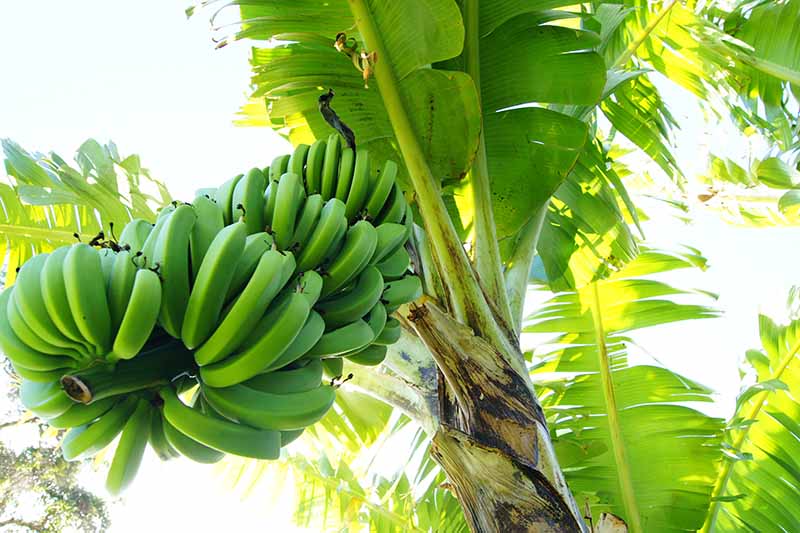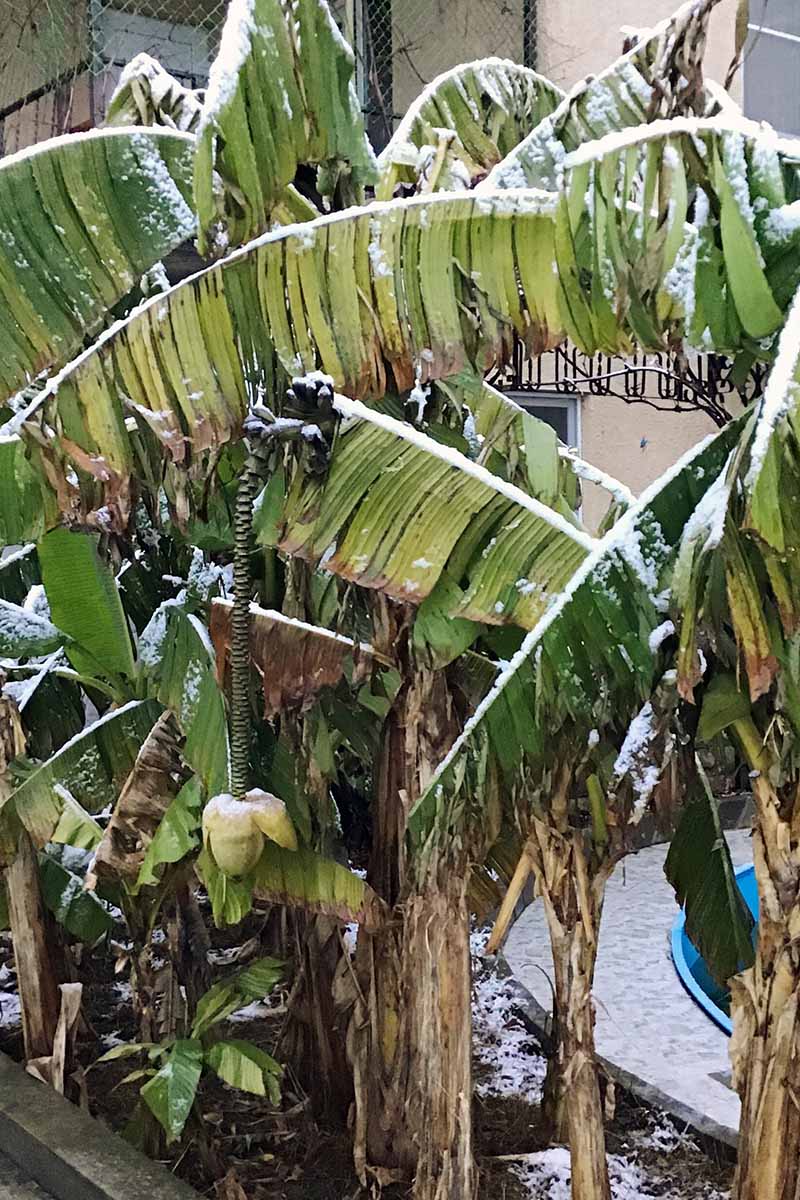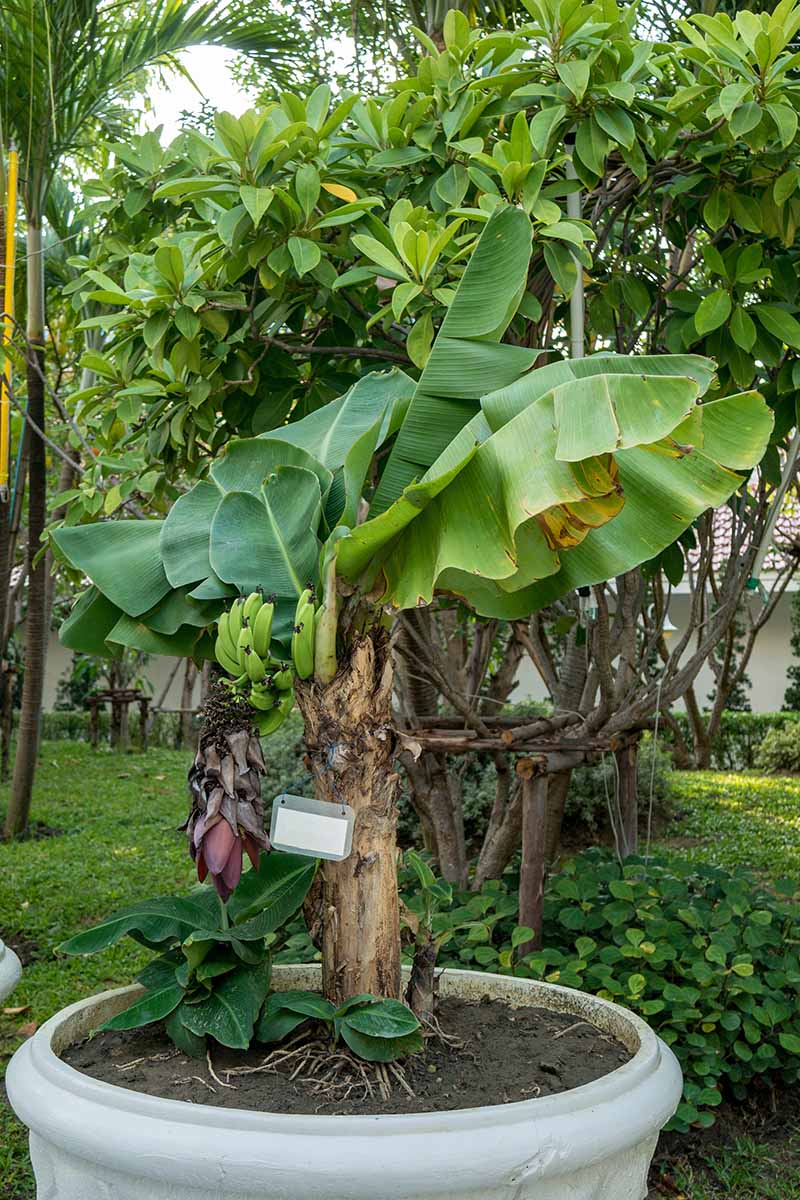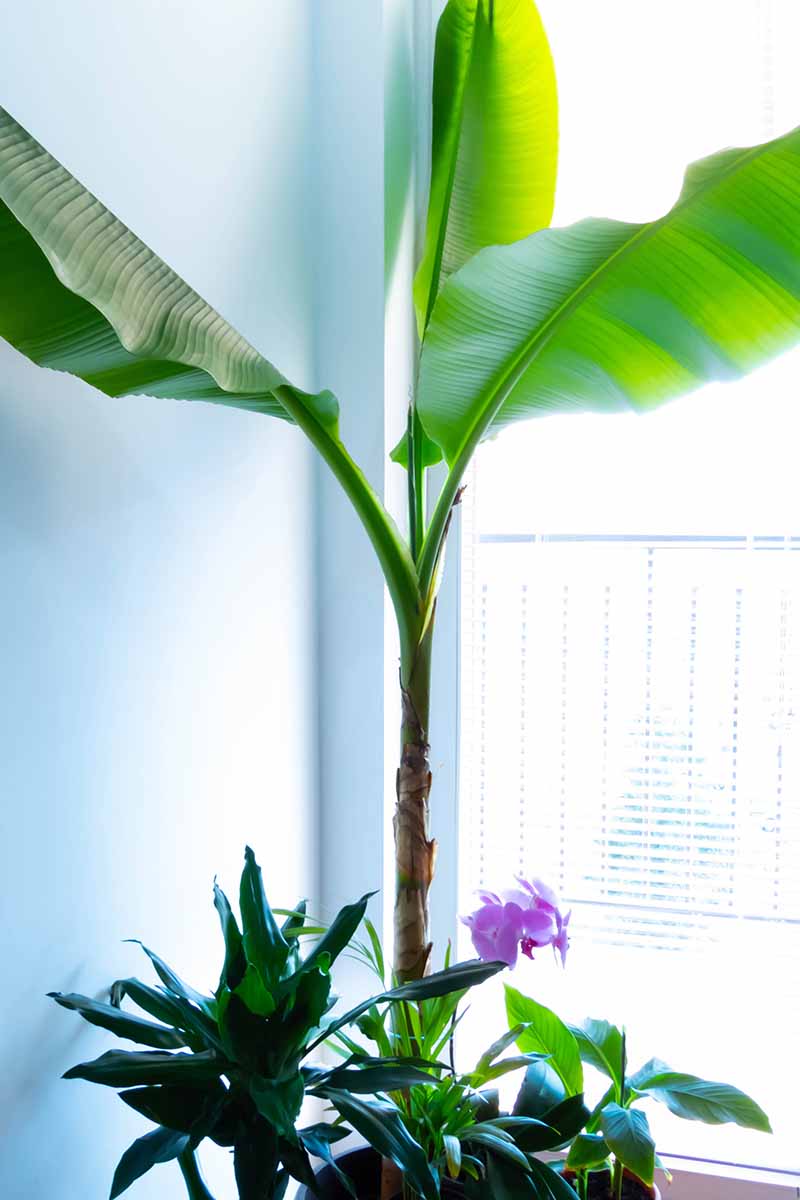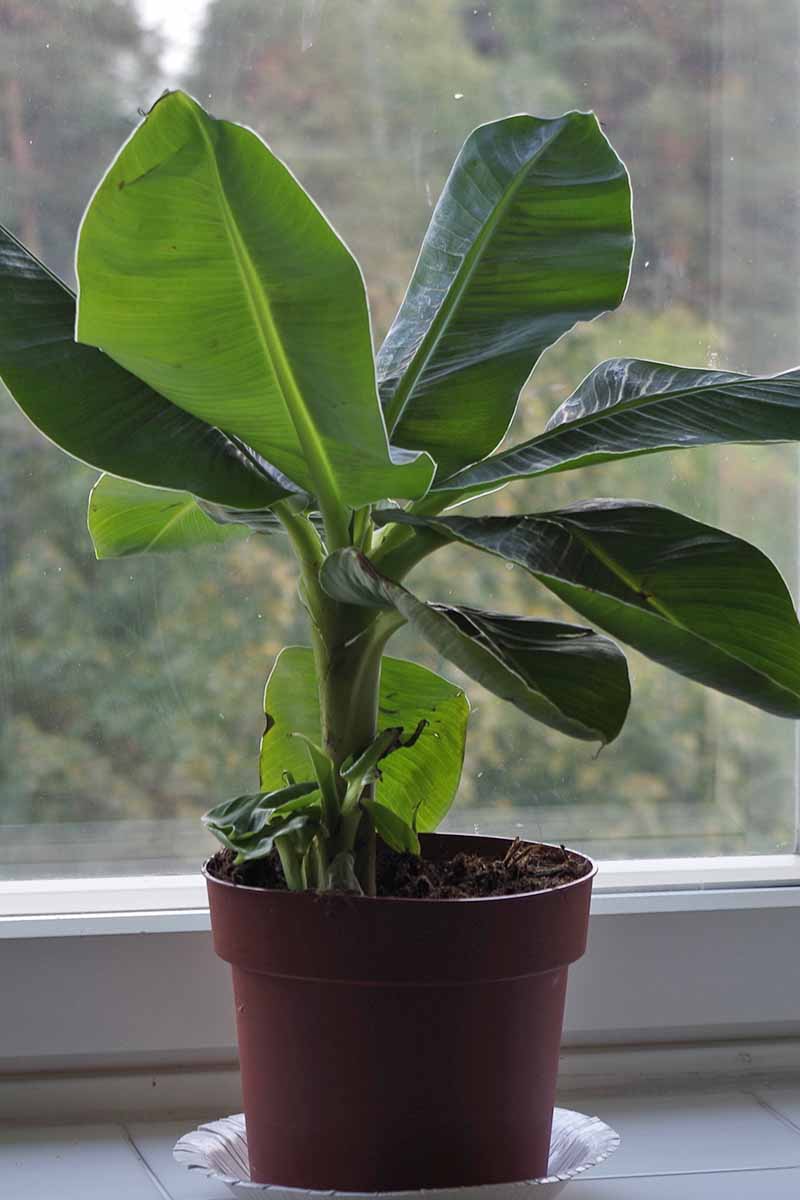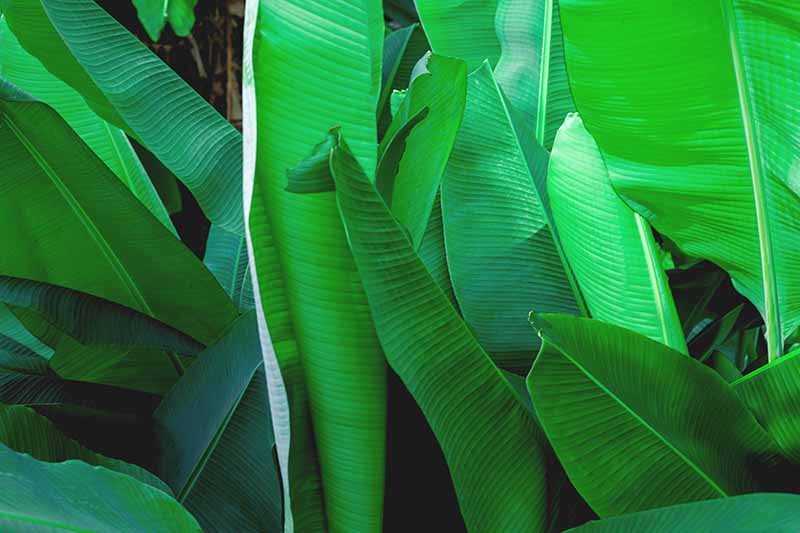Its “trunk” is actually a cylinder of tightly layered leaves called a pseudostem. We link to vendors to help you find relevant products. If you buy from one of our links, we may earn a commission.
It’s a Tropical Plant
There are about 70 species of the genus Musa, and they are indigenous to tropical areas of India, Southeast Asia, and northern Australia. They are now grown in more than 135 countries, mostly for their fruit, which is enjoyed around the world.
Given their native climate, it is unsurprising that banana plants are cold intolerant. They need mild temperatures in order to grow; their leaves will stop growing at around 55°F. They will suffer leaf damage at 32°F, and their underground rhizomes will die at sustained temperatures of 22°F or lower.
Having said that, we would be remiss if we didn’t mention that there are indeed a few cold-tolerant varieties available. For example, the ‘Japanese Fiber’ variety (M. basjoo) can withstand sub-zero temperatures. It’s hardy to Zone 5 or 6, and can be overwintered in colder areas by cutting it back and providing a protective mulch around the stem.
Nevertheless, most banana plants like it hot, and if you don’t live in USDA Hardiness Zone 9 or higher, you may wonder how you can add one of these tropical beauties to your landscape and keep it alive over winter. Let’s learn more!
Keeping Your Banana Plant Alive
Here, we’ll offer three ways you can protect and preserve your banana plant over the winter months:
Container Growing
Perhaps the most obvious way to successfully overwinter a banana tree is to grow it in a container and bring it indoors when temperatures drop.
It is best to select a dwarf variety for container growing. A 15-foot “tree” in a pot would be a bit unwieldy! Simply enjoy your potted plant on the patio or deck all summer, and then bring it indoors when outdoor temperatures begin to drop. You have a couple options in terms of where you place it indoors.
If you’d like to adorn an empty corner of your living room, make sure it’s a sunny spot and be sure to keep the soil moist, but not soggy. Provide humidity by misting the leaves via a squirt bottle filled with water. Expect to see slow growth during this period. If an attached garage or crawl space makes more sense for overwintering your container grown banana, begin preparing the plant by gradually reducing irrigation as the weather cools. Before the first frost, cut the stem back to about six inches tall, and place it in a cool, dark place – approximately 40-50°F. Water just enough so that the soil doesn’t separate from the sides of the container. It will go dormant through the cold months, and you can take it outdoors again and start watering it properly once temperatures start to climb and all risk of frost has passed.
Cover It
If your plant is growing in the ground, one option for safely overwintering it is to protect it with thick layers of mulch. The goal here is to protect the large rhizome at the base of the pseudostem, which is known as the “corm.” The corm has several growing points that will sprout new rhizomes – or “pups” – which can be transplanted.
Cut the plant back to about 4-6 inches above the ground, and then pile on at least a foot of leaves, straw, or other mulching material. You might also cover the pile with plastic sheeting, row cover material, or a cloche for more protection, and to keep the mulch in place. If you can’t bear to cut your plant down, you can leave it intact and fashion a wire cage around the pseudostem, leaving one to two feet of horizontal clearance from the stem to the cage. Make the cage as high as the amount of pseudostem you want to protect.
After the first light frost, fill the cage with shredded leaves or straw. Make sure you pack it in well, so it completely surrounds the stem. You may lose any portion of the plant that sticks out above the cage, but the covered portions and the rhizome underground should be protected. You can also wrap hessian or row cover material around the outside of the wire cage to add insulation and keep the material in place. Remove the cage and mulching material when warm weather returns and the plant shows signs of regrowth.
Trim off any dead material and start watering. You can spread the shredded leaves or straw around the base of the plant to provide some extra organic material to the soil.
Dig It Up
Another way to protect your banana plant during wintertime is to dig it up and move it to a cellar, crawlspace, or similar area where the temperature is consistently 45-50°F. Ideally, this should be done before the first frost.
Before you start moving earth, though, you’ll want to cut the plant back to about six inches tall. When that’s done, carefully dig out the rhizomes and roots. Make sure you dig out at least 6-8 inches on either side of the base of the stem. Place the root ball in a container of slightly moist sand. The tree will go dormant so it won’t need light, and you shouldn’t water it at all during this time.
Banana trees with pseudostems that are larger than five inches in diameter can be dug up and stored without lopping off the top first. Shake the soil from the roots and lay the plant on its side on top of a tarp or newspaper in your chosen location. Replant when all danger of frost has passed. You’ll want to give your tree plenty of water to revive it.
Rather than simply abandoning your bananas to the whims of weather, you have several choices for protecting them for a return engagement come springtime. Have you successfully overwintered one of these tropical beauties? How do you revive them after winter? Share your tips in the comments section below. Do you have other plants you need to protect from the cold? Check out these guides:
Guide to Clematis Winter Care: Protect Your Vines From Freezing and Frost Lemongrass Winter Care: How to Prepare for the Cold How to Protect Rosemary Plants in the Winter How to Prepare Fruit Trees for Winter
© Ask the Experts, LLC. ALL RIGHTS RESERVED. See our TOS for more details. Originally published on December 29, 2019. [lastupdated]. Uncredited photos: Shutterstock.


